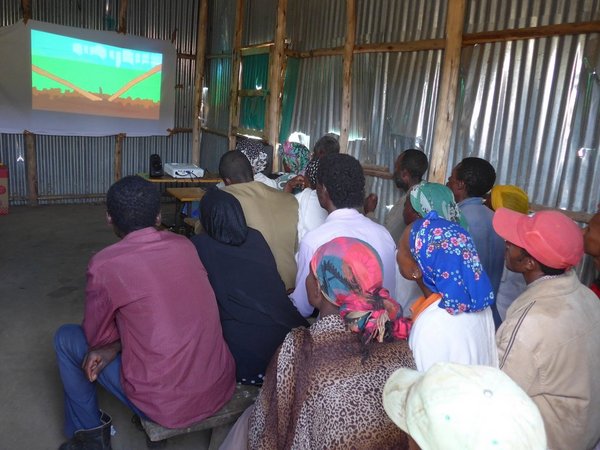- Share this article
- Subscribe to our newsletter
Videos and farmer-to-farmer learning for a more sustainable agriculture
Smallholder family farms shape the agriculture in Sub-Saharan Africa. At the same time, they are often affected by declining soil fertility as well as hunger and poverty. Farming practices that increase productivity as well as protecting the soil are therefore crucial. In collaboration with Deutsche Gesellschaft für Internationale Zusammenarbeit (GIZ), researchers from the Universities of Göttingen and Mannheim (both in Germany) and Santa Clara (California), have investigated how training methods can spread good practice in Ethiopia. The results were published in the journal The World Bank Economic Review in December.
To increase productivity and soil fertility, farmers need to combine and apply different practices. These include using improved seeds, in addition to synthetic and organic fertilisers – such as manure or compost. However, this requires specific knowledge about how to combine the practices correctly and adapt them to local conditions. "We therefore thought it was crucial to investigate how complex information effectively reaches smallholder farmers," says Professor Meike Wollni, an agricultural economist at Göttingen University.
To find out, the research team randomly sorted selected villages in the Ethiopian highlands into three groups. In the first group, “model farmers” were trained who should then pass their knowledge on within their communities. In a second group of villages, an educational video was shown in addition. The third group made up the control group and received no training.
"Both the farmer-to-farmer approach and the combination of model farmers and video increase the use of these practices," says first author Dr Denise Hörner from the University of Göttingen. This is especially true for more complex practices such as the use of compost.
A trickle-down effect to farmers without direct training
Furthermore, the team also found evidence that farmers who were not directly trained by model farmers also used the practices more often – an indication of informal information transfer in the villages. "Apart from finding that information was informally trickling down to the group of farmers who weren’t receiving training personally from a model farmer, we found that there was a significant additional benefit for this particular group from watching the educational video," says Hörner.
The results underline the potential of farmer-to-farmer learning to disseminate complex technologies. The video method could be used in addition in order to convince even more smallholders to use these technologies. Overall, further research is needed to investigate the cost-effectiveness of the different training methods.
(University Göttingen/wi)
Reference:
Hörner, D., Bouguen, A., Frölich, M. und Wollni, M. (2021): Knowledge and adoption of complex agricultural technologies – Evidence from an extension experiment. The World Bank Economic Review. DOI: 10.1093/wber/lhab025





Add a comment
Be the First to Comment